Taito and ININ Games have teamed up to deliver numerous collections of classic Taito games in recent years, including Space Invaders Invincible Collection, Space Invaders Forever, and several Darius collections. Now, the two companies (along with Japanese developer Hamster) have unleashed a Switch-exclusive collection called Taito Milestones. This compilation focuses on (apparent) landmark arcade releases from Taito, including the co-op classic, The Ninja Warriors. More arcade games for consoles is always a good thing, but the low-frills nature of the collection might disappoint casual fans of arcade classics.
After launching Taito Milestones, players are taken to a menu depicting the 10 games in the collection, all listed in chronological order. An original tune plays on the menu. No options or historical data can be accessed from the menu, in contrast to the basic but interesting information displayed in ININ’s Space Invaders collections. The games do feature option settings and digital manuals; they’re just accessed after launching the individual title. Available options (including customizable controls and a single save state per game) are the same as the ones in the separate Arcade Archives releases that are sold on PlayStation and Switch. As the main menu indicates, Taito Milestones is really a collection of Arcade Archives titles rather than a newly developed compilation.
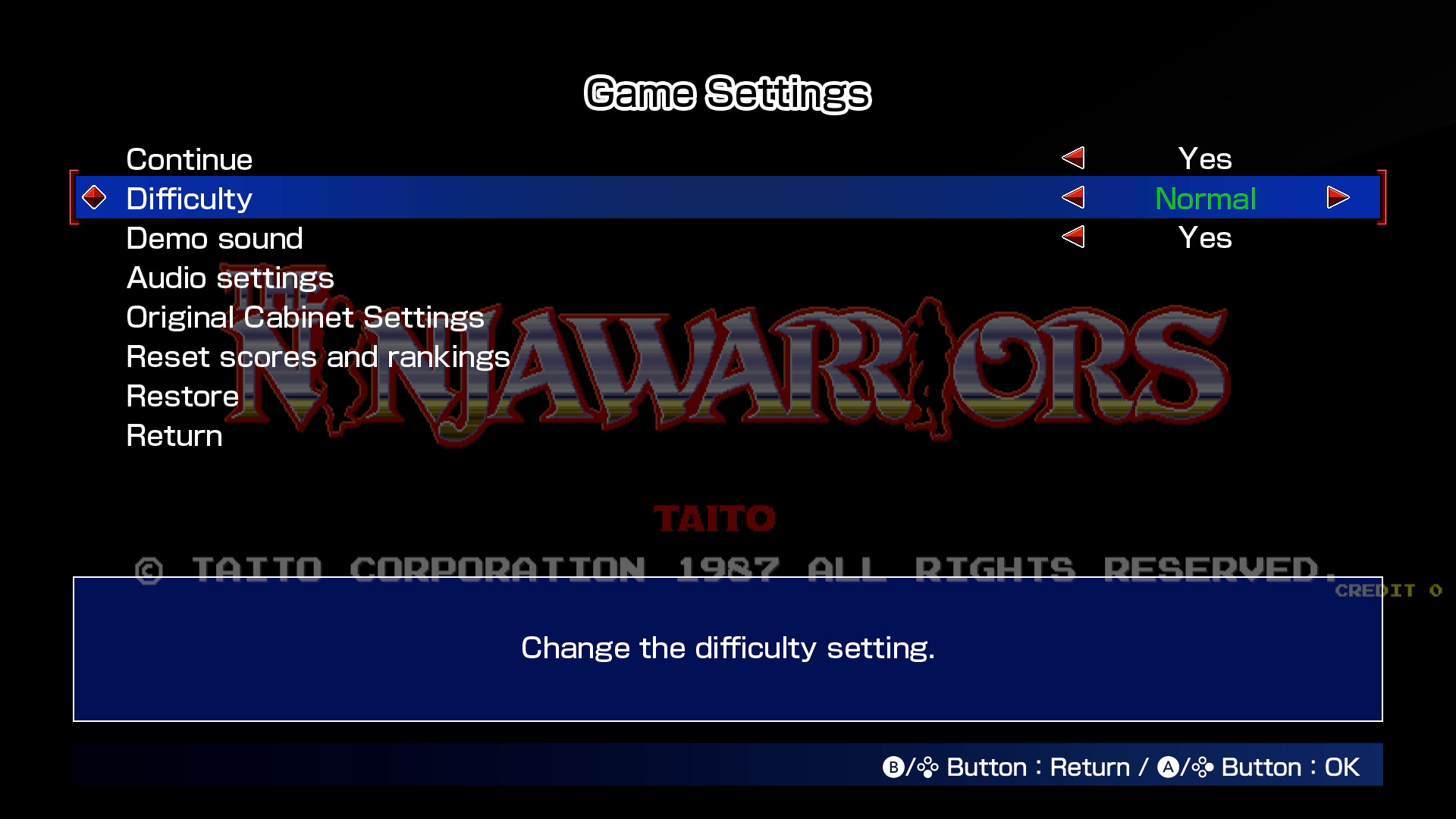
Taito Milestones includes 9 non-cooperative games and one co-op title. All but one of these games can be purchased separately on Switch and PlayStation:
- Space Seeker (1981): This one is a very unique game that mixes a map screen, side-scrolling shoot ‘em up stages, and first-person cockpit-view shooting stages. The game’s ambition is commendable, but the difficulty is so jacked up that only the most dedicated players will get much out of it. Space Seeker can’t currently be bought separately, making it exclusive to this collection.
- Qix (1981): A bonafide classic, Qix created a genre that continues (mostly via indie releases) to this day. Players control a spark that must draw lines across the screen while avoiding enemies. Draw off enough of the screen and you win. Qix is still pretty fun although plain and clunky compared to modern clones. This one also comes on the Taito Egret II Mini arcade cabinet.
- Front Line (1982): Probably the inspiration for top-down shooters like Commando and Ikari Warriors, Front Line sees players controlling a soldier who can fire bullets and grenades. This Arcade Archives version adds twin-stick aiming, improving on the original game. That said, the difficulty is obnoxiously high, so don’t expect much enjoyment from Front Line.
- Wild Western (1982): Playing as a cowboy on a horse, players must shoot at bandits while avoiding endless obstacles. Like Front Line, this Arcade Archives version adds optional twin-stick aiming. Wild Western’s difficulty is a bit high but still reasonable enough to have fun. It’s also the first game on the collection to have good music, playing chiptune versions of “Ghost Riders in the Sky” and “Do Your Ears Hang Low?”
- Alpine Ski (1982): A vertically-scrolling skiing game, players must avoid obstacles and other skiers while trying to collect score bonuses from the ground. It’s too easy to crash, but the game ends when time runs out rather than when the gamer runs out lives.
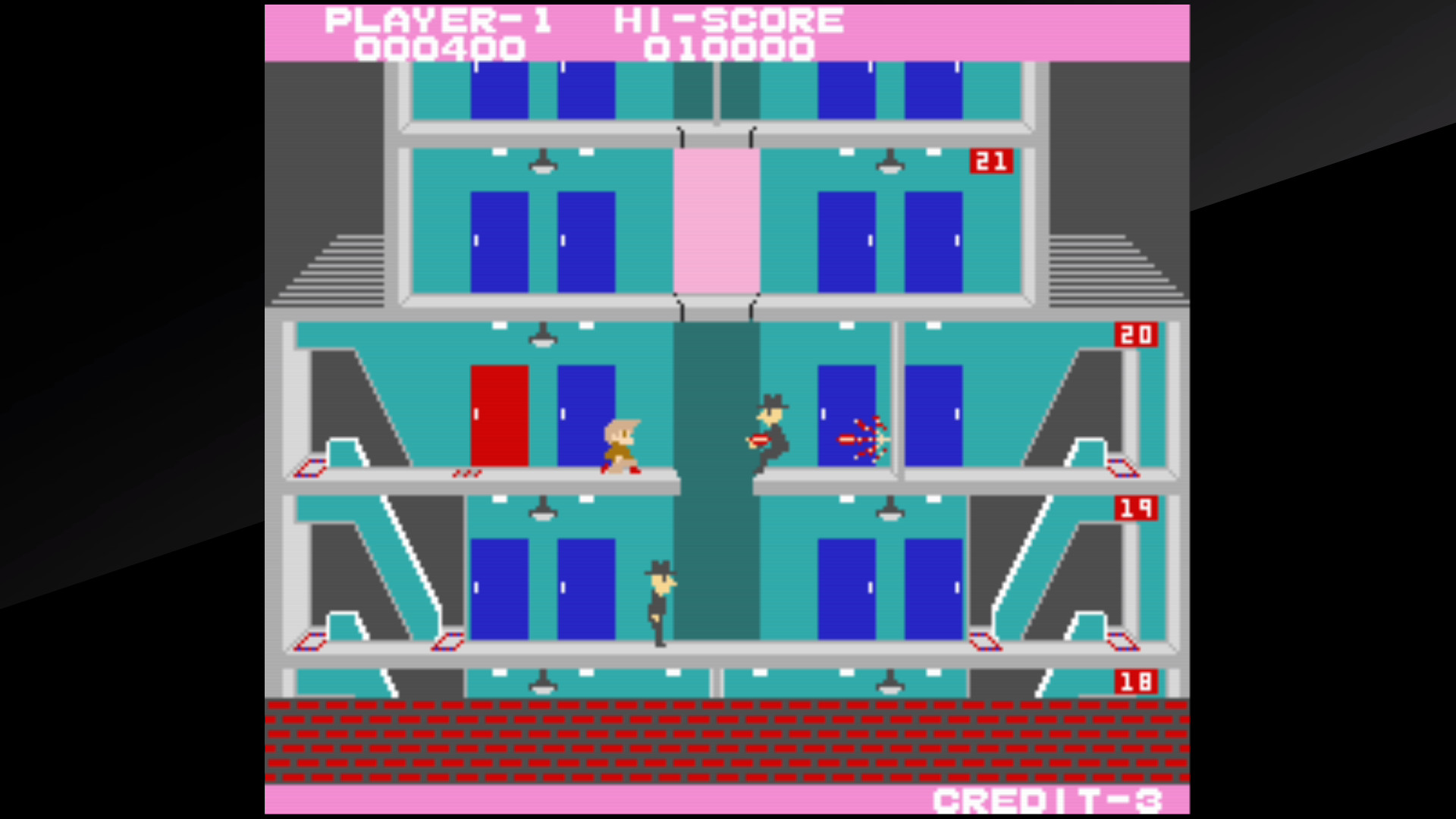
Elevator Action
- Elevator Action (1983): One of the better games in this collection, Elevator Action is an action platformer in which a spy must traverse the floors of a skyscraper while searching for red doors that hold secret documents. Sadly, the co-op sequel, Elevator Action Returns, did not make it into in this compilation, though both games are included on the Taito Egret II Mini.
- Chack’n Pop (1983): A bizarre single-screen platformer in which the protagonist can’t jump but can switch back and forth between ceiling and floors, Chack’n Pop features several characters who went on to appear in Bubble Bobble, a game that is sadly not included here. This one might be fun if players can master the mechanics, but I find it unintuitive and frustrating.
- The Fairyland Story (1985): Another standout title, Fairyland Story is basically a proto-Bubble Bobble. A cute witch must use her wand to turn enemies into cupcakes and then push them off a ledge, destroying them. Shame this one isn’t co-op, but it’s still worth a playthrough.
- Halley’s Comet (1986): In this vertically-scrolling shoot ‘em up, one heroic ship must fend off an army of aliens in order to stop a comet from reaching Earth. The graphics and sound are impressive for the time, but the ship’s weapon is underpowered, making it hard to take on large numbers of enemies at once. Halley’s Comet, Chack’n Pop, and Fairyland Story are all included on the Taito Egret II Mini.
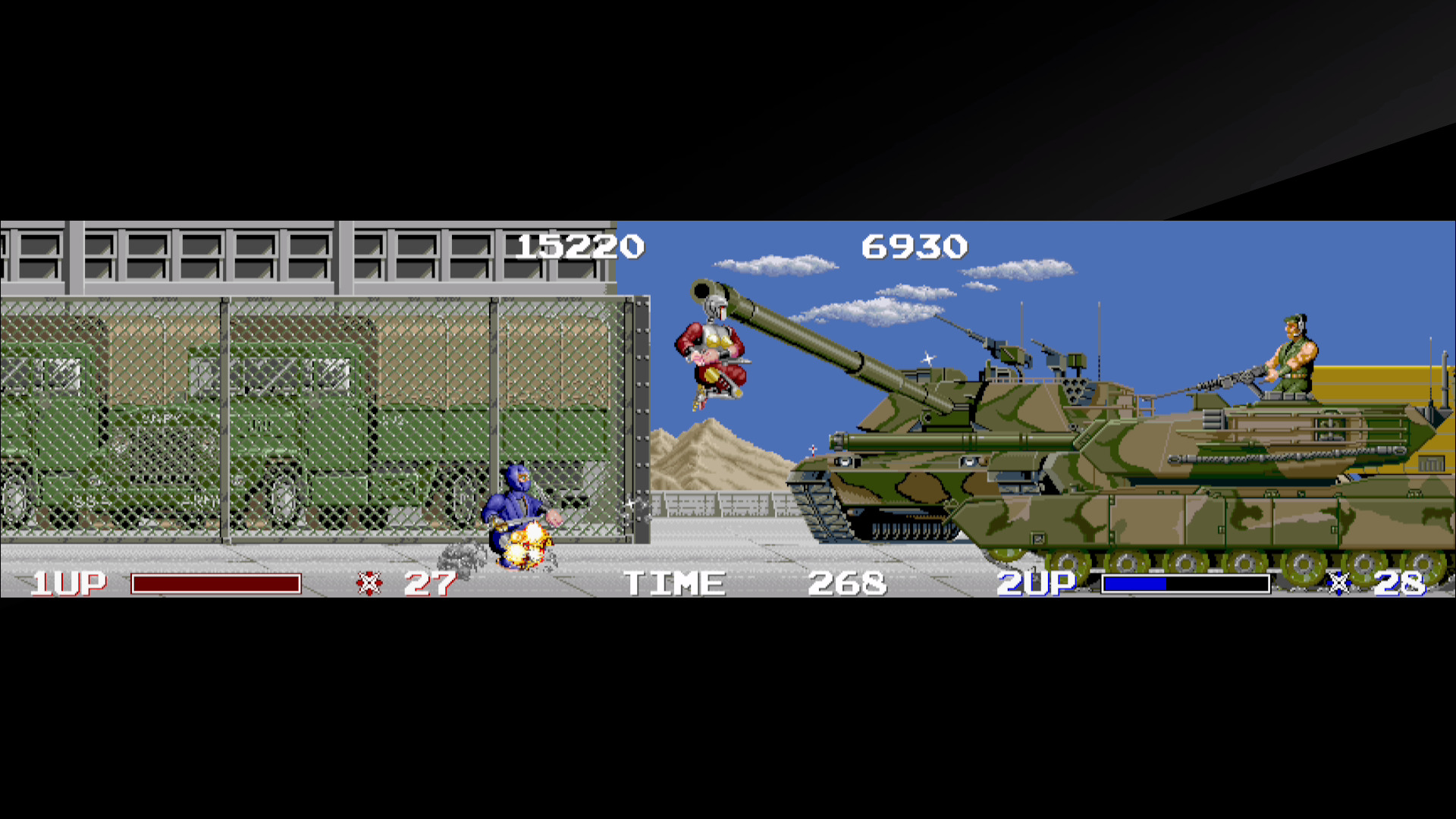
The Ninja Warriors
Last, but not least, the tenth game on the collection features 2-player local co-op. The Ninja Warriors (1987) is a side-scrolling action-platformer in which a pair of heroic ninja robots must stop an evil army from taking over the world. The game originally used a dual-monitor display (just like Warrior Blade and Dariusburst) in order to provide a very wide playing field. The Arcade Archives version presents the game in letterboxed format on a single-screen, preserving the original playing field.
The Ninja Warriors is built around the gimmick that both protagonists house Terminator-like endoskeletons inside them. When one of them takes damage, their robotic parts begin to show through. It’s a cool effect, and the character animation is pretty solid too. The ninjas can slash with a kunai, fire a limited number of shurikens, block attacks by holding the kunai button, crawl, and, of course, jump. Jumping is clumsier than it should be, though, due to being mapped to the upward directions on the stick or D-Pad. Players can’t hold up to jump repeatedly; it must be pressed anew each time. With that style of jumping, an actual jump button would’ve been a welcome inclusion.
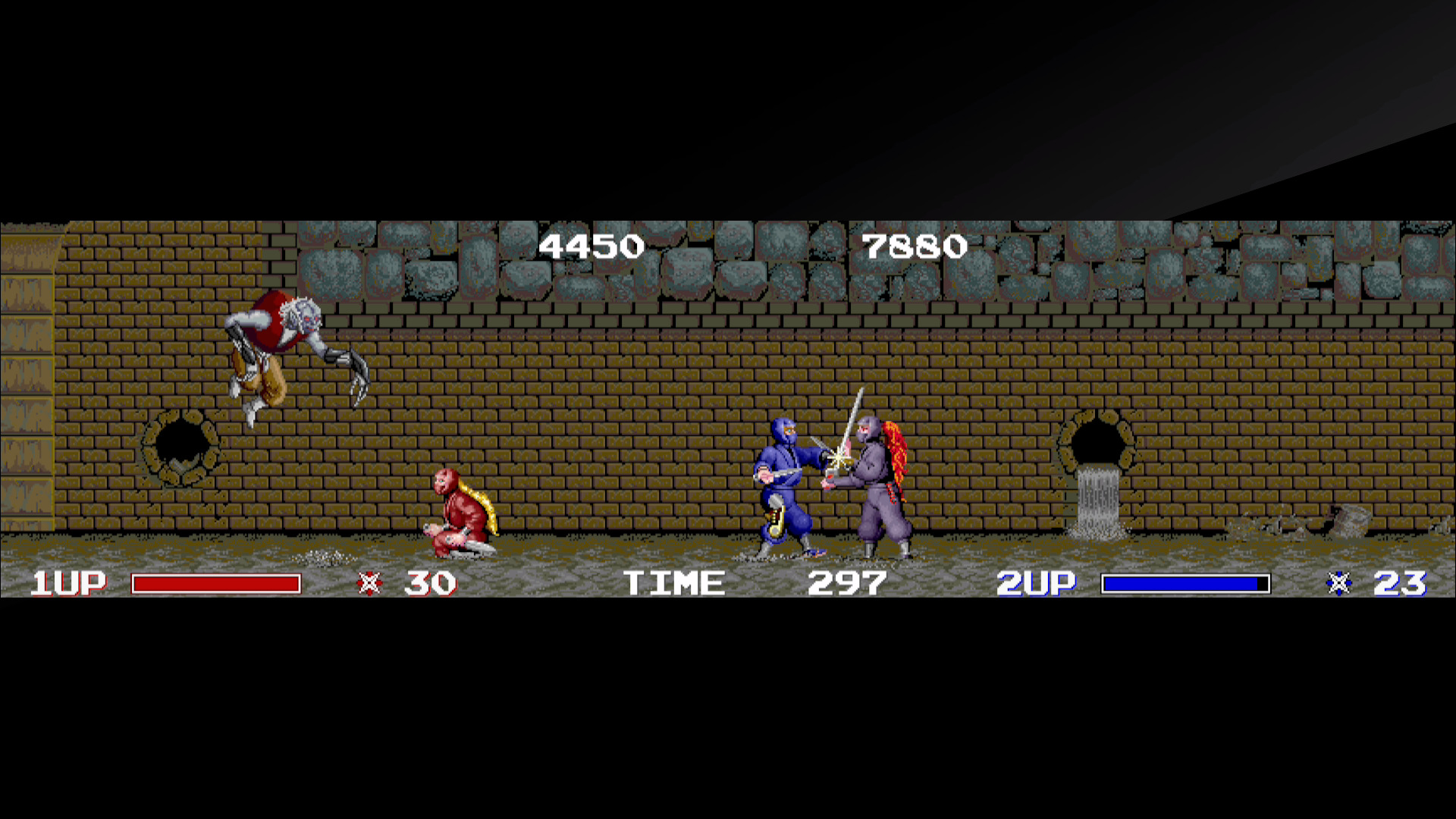
Slightly clumsy gameplay aside, Ninja Warriors’ biggest problem is its lack of level variety. Each stage takes place in a different location, including a city, an army base, sewers, and a dictator’s estate. Unfortunately, the stage design nearly always involves walking from left to right across a flat level with no platforms or excursions to shake things up. The sewers do add some walls to crawl under, and the final level has staircases to climb (by pressing up or down in just the right spot), but those elements fail to fend off the monotony. This game is worth experiencing at least once, but the modern sequel, The Ninja Saviors, is worlds better.
All told, Taito Milestones is a strange compilation. It makes no effort to include Taito’s most popular games, instead consisting of an arbitrary assortment of titles. Only about half of these games hold much appeal beyond historical value, and nine of them can be bought separately for eight bucks a pop. $40 for 10 games is certainly a better price than buying ten Arcade Archives games for $80, but that doesn’t make Taito Milestones a great value. In the PlayStation 2 and original Xbox era, the Taito Legends and Taito Memories collections offered far more and better games at a similar price point. Taito Milestones can’t possibly compare to those previous collections (or even the $60 Space Invaders Invincible Collection), though it might still be worth picking up when it goes on sale.
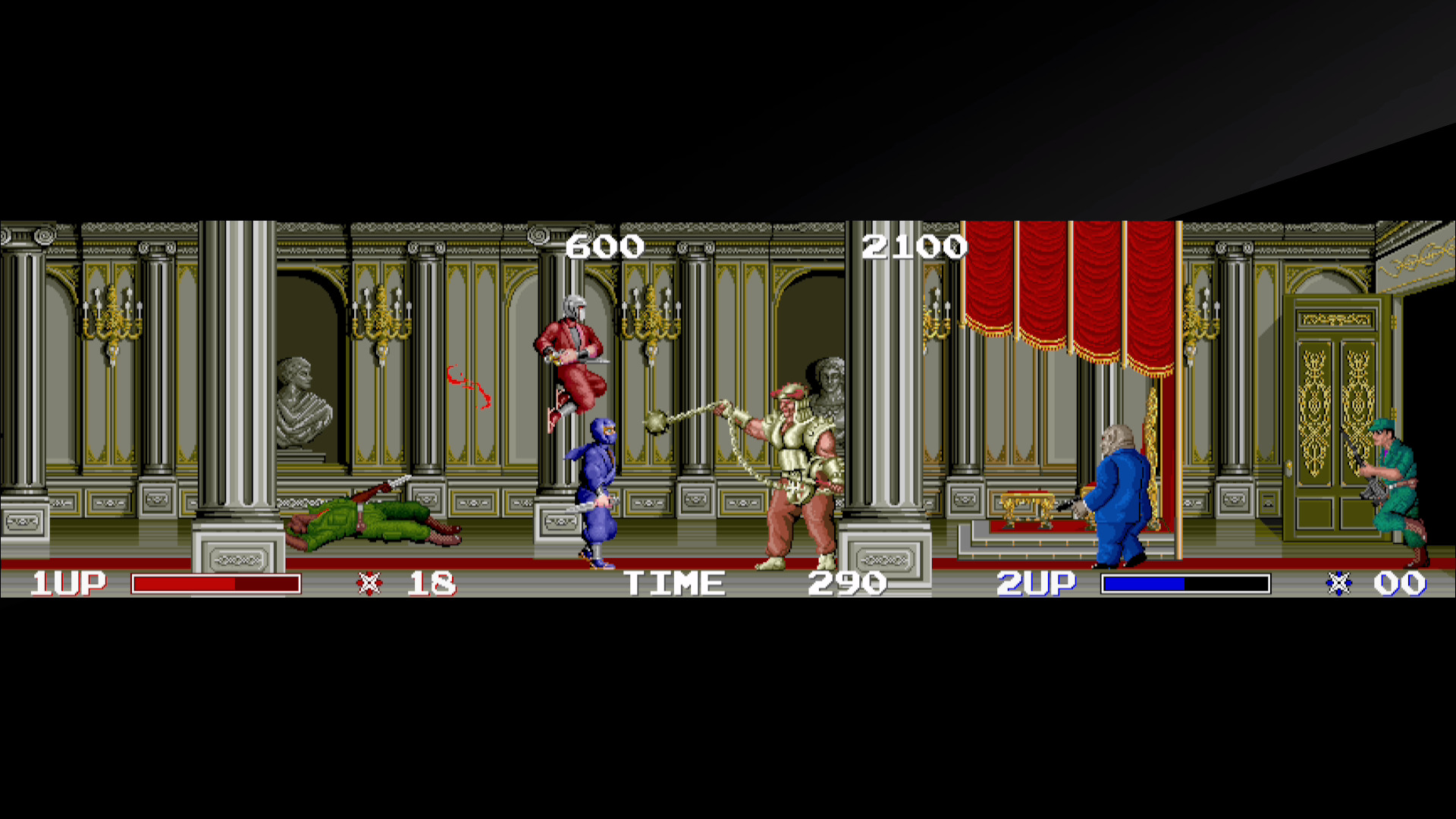
Taito Milestones for Nintendo Switch costs $39.99 in digital and physical formats. Strictly Limited Games also sells a Limited Edition for $39.99 and a Collector’s Edition for $89.99, though quantities are limited.
A download code was provided by the publisher for this review.
Verdict
Co-Op Score
Overall
The Co-Op Experience: In The Ninja Warriors, one player controls NINJA and the other controls KUNOICHI as they take down the Demon King, Banglar.
Co-Optimus game reviews focus on the cooperative experience of a game, our final score graphic represents this experience along with an average score for the game overall. For an explanation of our scores please check our Review Score Explanation Guide.
